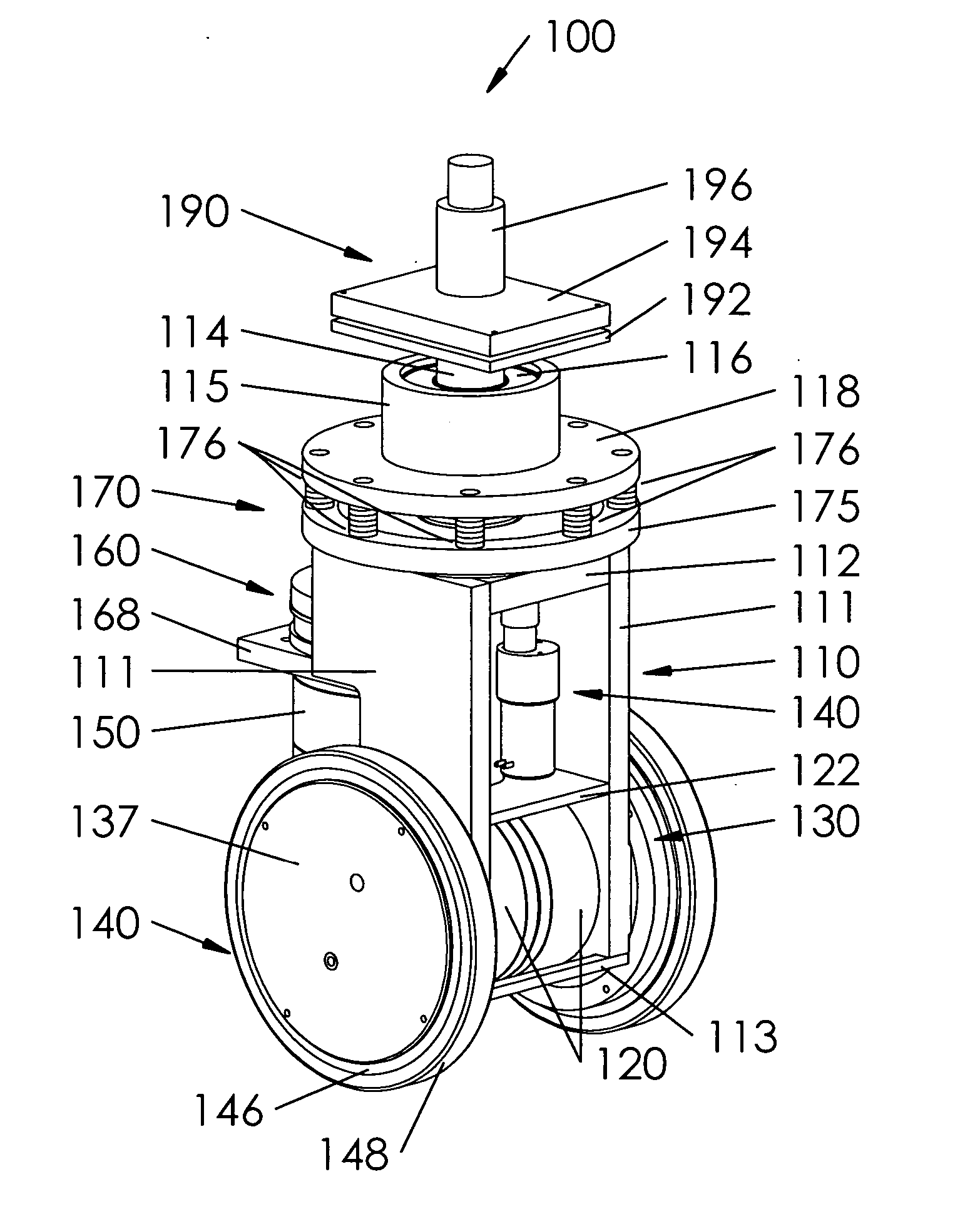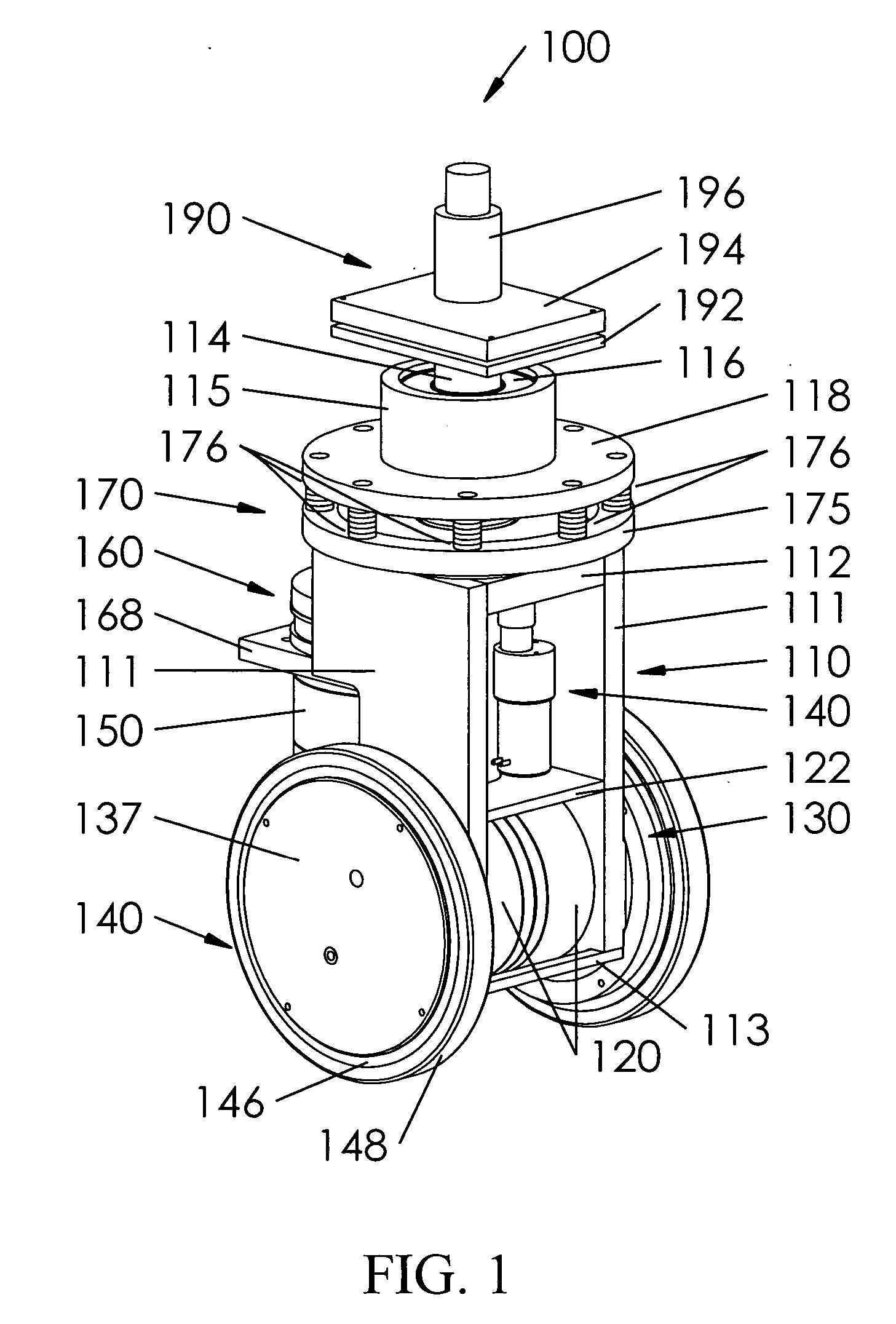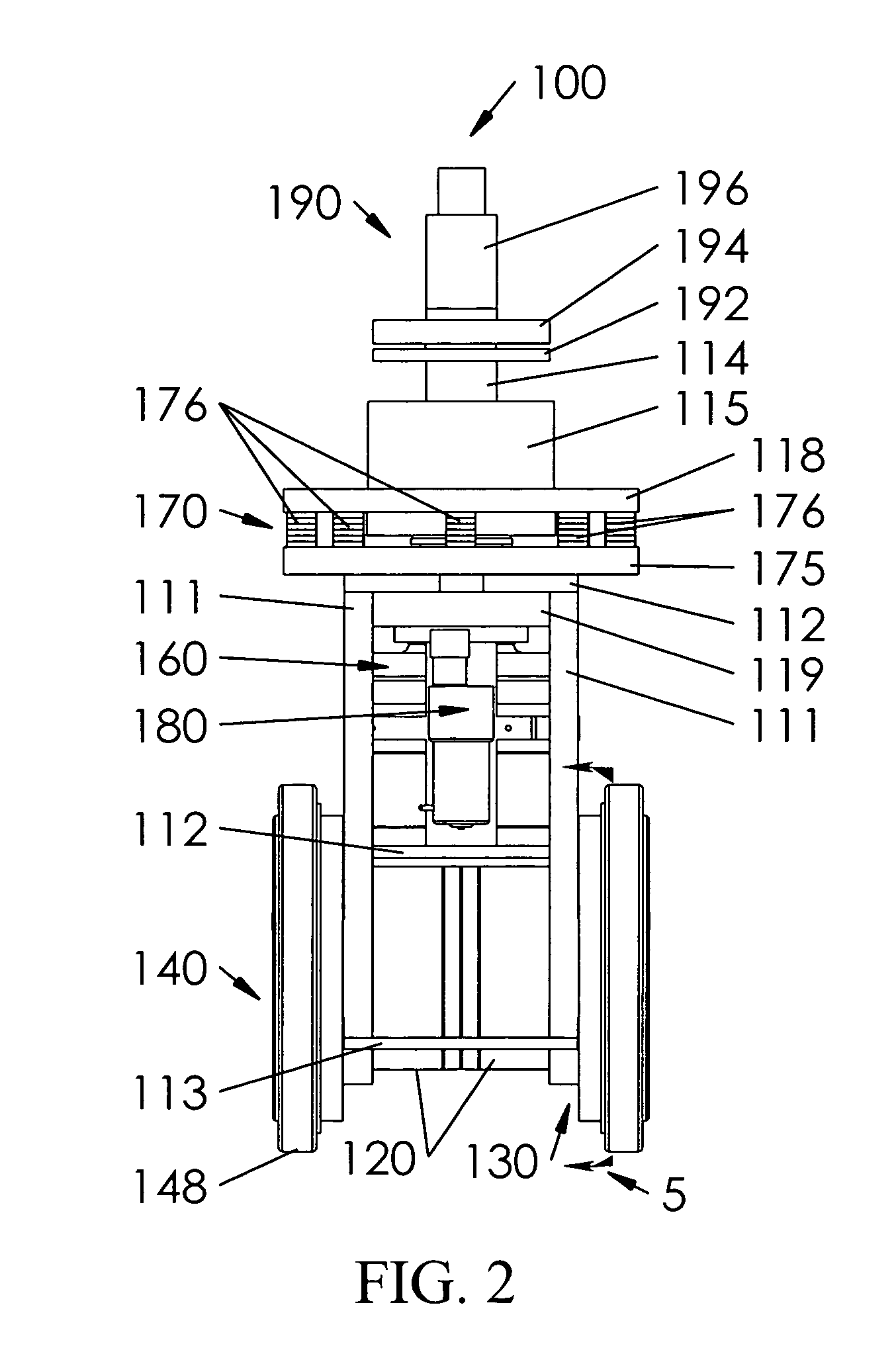Modular dual wheel drive assembly, wheeled devices that include modular dual wheel drive assemblies and methods for moving and/or maneuvering wheeled devices using modular dual wheel drive assemblies
a technology of modular dual wheel drive and drive assembly, which is applied in the direction of electric propulsion mounting, wheelchair/patient conveyance, manufacturing tools, etc., can solve the problems of insufficient power obtained from such scaled-down large-scale drive system for small-scale self-propelled wheels, limited steering range, and limited power supply
- Summary
- Abstract
- Description
- Claims
- Application Information
AI Technical Summary
Benefits of technology
Problems solved by technology
Method used
Image
Examples
Embodiment Construction
[0013] Typical large-scale self-propelled vehicles provide at least one drive motor for each wheel assembly. However, due to the size of the wheel assemblies, the types of drive motors used with such large-scale machines are inappropriate for use with small-scale machines. The drive systems conventionally used with small-scale self-propelled machines do not provide sufficient mobility or maneuverability for the small-scale self-propelled machines, do not provide sufficient degrees of freedom and / or are unable to avoid scuffing and / or otherwise avoiding damage to the surface on which the small-scale self-propelled machine moves.
[0014] This invention provides a dual-wheel self-propelled wheel assembly.
[0015] This invention further provides dual-wheel self-propelled wheel assemblies for self-propelled machines.
[0016] This invention separately provides a self-propelled wheel assembly for a self-propelled machine having improved load weight distribution,
[0017] This invention separate...
PUM
 Login to View More
Login to View More Abstract
Description
Claims
Application Information
 Login to View More
Login to View More - R&D
- Intellectual Property
- Life Sciences
- Materials
- Tech Scout
- Unparalleled Data Quality
- Higher Quality Content
- 60% Fewer Hallucinations
Browse by: Latest US Patents, China's latest patents, Technical Efficacy Thesaurus, Application Domain, Technology Topic, Popular Technical Reports.
© 2025 PatSnap. All rights reserved.Legal|Privacy policy|Modern Slavery Act Transparency Statement|Sitemap|About US| Contact US: help@patsnap.com



